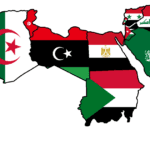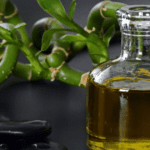A Journey Through the Rich History of Our diurnal chief
preface
Bread, a putatively simple yet widely cherished chief, has been a abecedarian part of mortal diets for glories. Its rich history spans across societies, mainlands, and centuries, reflecting the diversity of mortal civilization. In this disquisition of the history of chuck , we will unravel the fascinating trip of this humble food item from its ancient origins to the different forms it takes on our ultramodern tables.Now we are going to study the history of bread.
The Origins of Bread A Grainy Tale
The story of chuck begins with the civilization of grains, specially wheat, barley, and rye. The transition from vagrant huntsman- gatherer societies to settled agrarian communities marked a pivotal turning point in mortal history, laying the foundation for the development of chuck . The foremost substantiation of chuck – making dates back to around 14,000 times ago in the Natufian culture of the Middle East, where early humans likely discovered the transformative power of grinding grains and mixing them with water.
The Ancient Egyptians Masters of Bread Making
One of the foremost societies to elevate chuck – making to an art form was ancient Egypt. The Egyptians learned the civilization of wheat along the rich banks of the Nile, giving rise to a flourishing chuck culture. They developed elaborate ways for baking, including the use of spherical complexion ranges, a practice that laid the root for unborn advancements in incinerating technology.
Bread also held significant artistic and religious significance in ancient Egypt. The process of turmoil, pivotal for leavened chuck , was discovered accidentally, leading to the creation of lighter, airy loaves. The Egyptians associated the rising of the dough with the cycle of life, death, and revitalization, weaving chuck into their religious rituals.
The Greeks and Romans A Rise in complication
As ancient societies flourished, so did the art of chuck – timber. In Greece and Rome, chuck evolved from a introductory food to a symbol of status and complication. The Greeks introduced colorful types of chuck , including flatbreads and plakous, a precursor to ultramodern- day focaccia. The Romans, famed for their engineering prowess, developed large- scale bakeries and introduced the first milling machines, streamlining the product process.
The Middle periods A Flourishing Trade
With the fall of the Roman Empire, the center of chuck product shifted to cloisters and orders in medieval Europe. Monks, frequently professed in the art of baking, played a pivotal part in refining and conserving the ways passed down from age. The use of wind and water manufactories for grinding grains came wide, adding the effectiveness of flour product and contributing to the growth of a burgeoning chuck trade.
During this period, different regions developed their distinctive chuck kinds, from the rhinestones of France to the pumpernickel of Germany. The collaborative act of breaking chuck gained artistic significance, getting a symbol of concinnity and social cohesion.
The Renaissance and Beyond Baking inventions
The Renaissance brought about a rejuvenescence of interest in wisdom and the trades, impacting the world of chuck – making as well. inventions similar as the Dutch roaster and the discovery of incentive’s part in turmoil revolutionized the baking process. Leavened chuck , with its airy texture and pleasurable taste, came a chief across Europe.
In the 19th century, the Industrial Revolution further converted the world of chuck . Mechanized baking processes, the invention of the dough mixer, and the mass product of chuck led to increased availability. The iconic sliced chuck , made possible by Otto Frederick Rohwedder’s chuck – slicing machine in 1928, ever changed the way people consumed this age-old chief.
Bread Around the World A Global Palette
As disquisition and trade expanded, so did the kinds of chuck worldwide. Each culture invested its unique flavors, constituents, and ways into their chuck – making traditions. Naan in India, tortillas in Mexico, and injera in Ethiopia are just a many exemplifications of the different range of chuck set up across the globe.
Modern Challenges and inventions
While chuck has experienced multitudinous metamorphoses throughout history, the 20th and 21st centuries have brought both challenges and inventions to the assiduity. The rise of gluten perceptivity and the preference for healthier options have led to the development of indispensable grains and gluten-free viands. Artisanal bakeries, fastening on traditional styles and high- quality constituents, have gained fashionability, appealing to consumers seeking a more authentic chuck experience.
Conclusion Breaking Bread in the 21st Century
From its humble onsets in ancient societies to the global miracle it’s moment, the history of chuck reflects the elaboration of mortal societies and the imagination of innumerous cookers and originators. As we continue to break chuck in the 21st century, it’s worth appreciating the rich shade of flavors, ways, and artistic significance that this putatively simple food item brings to our tables. So, the coming time you savor a warm slice of chuck , flash back that you’re partaking in a tradition that has gauged centuries and connected people across time and space.










